Why do people actually subscribe? Why do people buy? What makes them give up one of their most prized possessions – their email address – to get access to a PDF or training? What makes them actually make the decision to give up their most precious commodity – time – to read your emails? What makes them part with their hard-earned cash in exchange for something you are offering (or something you are promoting)? Today we’re going to discuss the ONLY five reasons people subscribe and buy! If you don’t know these reasons, any attempt to sell anything will be futile.
Click Here for The Written Transcript of This Episode
NEW EPISODE: “Book Launch Party: An Interview with Matt About Turn Your Passions Into Profits” Listen here now!
Links Mentioned in this Episode
TEXT ME: +1 (260) 217-4619
Don’t Miss An Episode – Subscribe Below
Previous Episodes of The Affiliate Guy
Think You’re Not an Expert? Think Again!
Replay: Overcoming Fear to Find Your Calling
The 3 C’s of Successful Affiliate Programs Part 3
BONUS EPISODE: Redefining the Top 1% with Trevor Blattner
The 3 C’s of Successful Affiliate Programs Part 2
The Only 5 Reasons People Subscribe or Buy
Why Do people subscribe? Why do people buy? Why do they give up their email address? Why do they fork over their hard-earned money for something that you’re promoting? Well, that’s what today’s all about.
There are five reasons. and for purposes of this episode, I’m referring to products that do not meet a basic necessity.
We’re not talking about food, although you could argue the majority of food sales in our culture go well beyond necessity. I’m not talking about shelter.
I’m pretty sure my family and I could survive in a house, a fifth of the size of the one we have. So I guess you could say most of our houses, not in necessity.
Clothing, you know, we’re not talking about those things. Even so, if you’re selling food, shelter, and clothing, you can still apply these five reasons. So there are five reasons.
What happens with most people are we try to go beyond these basics?
We try to find a clever reason for people to buy a clever marketing ploy or something like that and we forget about these basic reasons why people buy.
There are only five reasons to be clear. There is not a sixth reason. There are only five reasons if your attempts to sell do not fall into these five reasons if you aren’t hitting at least one of these reasons, you’re not going to sell anything, simply put, you’re not going to sell anything.
If you don’t have at least one of these reasons, you’re not going to tap into the desires that your audience has going on right now. Like these five things are happening right now in them. Like they are looking to do these five things. Then you’ll see that as I share them. So let’s start with number one and you’ll kind of get a taste of that.
1) To save time.
If a product is a time-saver, it’s very attractive, especially in today’s fast-paced life. This is always been true. Even people back like 300 years ago when they were sitting on their front porch with their little straw in their mouth, spitting, sunflower seeds, whatever it was, they still wanted to save time.
Oh, I know I’d rather take hours to plow the, whatever to plow the soil. Now I don’t want it to take half as long. Why would I want something to take half as long? That’s ridiculous. Right?
If you’ve ever seen the box dinner aisle at the grocery store, it is full of so-called ‘food.’ I use food in a quotation there. That’s sole purpose is to be open, prepared, and eaten within 30 minutes. That’s it? That’s the whole purpose of that but what about information products?
How could this product save someone time if they’re starting a blog or writing a book, or how could it save them time? And maybe in, in doing certain things with parenting.
In order to highlight this reason ‘saving time’, you have to point out the intimidation of the task at hand, that’s the key. So what are they doing? and what’s intimidating about it. If it’s writing a book, for example, point out that the average amount of time to write a book is X. Most people take 100 hours to write a book.
In fact, I just finished writing my book. It took me about a hundred hours and you show them how the product can save them 30 hours. You can save 30 hours by investing in this $300 course. That’s $10 an hour. Is your time worth $10 an hour, statistically speaking, most Americans? Yes.
You have to point out the intimidation of what the time required to accomplish the task is. If you’re promoting an affiliate offer for a product that helps people lose weight, highlight the fact that the workouts are only 30 minutes per day in food, prep is easy and fast. You can’t talk about the difficulty of it when you’re selling, so find the ways that it does it.
How does it save time? In fact, you can lose weight and actually spend less time preparing your meals with this product. Okay? So maybe it’s a subscription service where they deliver the food to you or whatever, deliver the meals. You will spend less time cooking and be healthier. That’s a good combination. The second reason why people subscribe or buy.
Let me actually go back to that first one. Why does someone subscribe to save time? Why do they give up their email address to save time? So your lead magnet has to demonstrate how it saves people time and the same principles apply.
You highlight the intimidation of the task at hand, how this will save you five hours a week doing yard work, download my free report and I’ll show you how to save time.
2) To Save Money or Make Money
All right. The second reason why people subscribe or bias to save money or make money. Going back to, I said, I wasn’t gonna talk about shelter, but this kind of applies to shelter, right?
If you have a product that shows people how to save money on their electric bill or how to challenge a property tax assessment, that’s actually something that I downloaded about a year ago.
We got our property tax assessment and I’m like, how do you challenge a property tax assessment? I found a free report. I’m on this guy’s list. Now it’s all about real estate. And I was actually kind of fascinated by it, but I initially came in because I needed to save money or make money.
And I was able to take his script challenge our property tax assessment saved us about 400 bucks on our property taxes, four or $500. It was a substantial amount of money. I lowered our assessment by like $35,000 or $40,000 or something. It was pretty substantial.
The great thing about products like this is the results are data-driven and very tangible. The average customer “saves $200 per month using this product” or the average student “makes an additional $800 from their blog each week.”
The average author sells 10 additional books per week. And of course, you can, may not necessarily say the amount of money in that, but it’s implied that they’re going to make more money, right?
Our average student, whatever makes an additional $300 from their podcast every month. The savings or the income increase are both clear it’s data-driven, right? and they can be represented by dollar figures or percentages, both work.
If you’re promoting someone, else’s offer as an affiliate and you’ve used it, get specific about your results and then talk about other people’s results as well.
So share charts and graphs, share exact numbers about how much money it saved you or made you. Like I can point out and say, Stu McLaren’s tribe is responsible for an additional $24,000 a month to our business. I can literally point to the numbers. And it’s pretty specific, I mean, I could probably find the exact number over the past year, $24,212.
I don’t know the exact amount, but I know that in the past year we brought in nearly an additional $300,000 in revenue because of me taking that $2,000 course, that’s 150 X return just in the first year after taking his course. People subscribe and people buy to save money or make money and to save time.
3) To Address Fears
People buy a product when it helps them overcome fear. People subscribe to an email list when it helps them overcome fear. I have a friend Wes Wages and he teaches online marketers how to shoot great videos specifically how to do it with their iPhone, their smartphone.
He teaches the techniques, he teaches you how to do proper lighting, how to do makeup, all those things. How to set up, how to sound great. All the tech gear, how to position your phone, and what settings to put on your phone. None of that means a thing. If he doesn’t help people overcome their fear of being on camera.
I remember in a mastermind meeting, we were talking, talking about to him, how do we get people into his ecosystem? He was wondering, how do I get subscribers? And I was like, dude, it’s the fear thing. How to overcome your fear of being on camera, how to not be afraid to be on camera. You bring people in for that.
And then he sells them on the techniques and stuff. He sells them on the fact that shooting great videos is going to makes them money. He sells them on the fact that, well, he sells them on what we’ll talk about a number four and a number five. You know, that’s what he sells them on. But he brings them in based on overcoming fear.
The same can be true if you’re selling like a lot of people have that fear. A lot of people have that fear of being on camera. If he doesn’t address it, his sales will be abysmal. He’ll be missing out on a huge market of people that just need a little bit of coaching to overcome their fear.
Even a basic need industry can capitalize on this. Clothing companies do it all the time by addressing people’s fears of being “left out” or being “uncool.” Like “Buy this shirt and you don’t have to worry about being unpopular” is the message. Scary effective. It works incredibly well.
So what are some ways that you can address people’s fears and help them to overcome those fears? Because if you help them overcome their fear and they become potential buyers.
Even in the selling process, you help them overcome their fear so they can get to the other side and be able to see themselves purchasing the product.
So to review where we’re at so far:
#1, Save Time
#2, Save Money or Make Money
#3, To Address Fears
4) To Feel Pleasure
Have you ever seen a fast-food ad?
The food in those commercials looks nothing at all like it does in real life. The burger is dripping, the tomatoes are bright red, and the lettuce is crisp. It’s all the work of people called “food stylists.” They make it look appealing…even pleasurable.
In reality, the burger is four minutes past overdone and two minutes from being weaponized. The tomatoes are pink and the lettuce is droopy.
But the ad…so pleasurable.
So, if you are promoting a product, think about how it could make someone’s life more pleasurable. If you’re we’re going to learn copywriting. How do you make life more pleasurable? Right.
Well, if you learn copywriting and you’re able to do copywriting for your business, it’ll reduce your stress to the point that you’ll be happier.
How would it feel to finally write that book?
That’s a pleasure to see like that was one of the big things for me to see my book on the shelf. That’s a pleasure.
That actually has nothing to do. The reality is selling some books in stores isn’t that profitable. I mean, I may make a few thousand dollars from it. It’s not going to make that much money. That’s a pleasure. It’s pure pleasure. That’s it.
How would it feel to finally start that blog?
How would it feel to finally launch that product?
How would it feel to finally lose that 25, 30, 55 pounds?
How would it feel to finally have that relationship?
How would it feel to be able to come home to a peaceful house? That’s a pleasure.
Promising pleasure is a very effective sales technique, but pleasure does not have to be confined. This is key to the typical feelings we associate with pleasure. Sometimes the act of buying itself is pleasurable.
I’ll never forget my friend originally, Goldsboro, you guys should check him out. I think I did a podcast with them probably 200 episodes ago. He once told me that people buy because the act of buying makes them feel good about themselves.
In other words, people buy because the act of buying makes them feel pleasure. Makes them feel good about who they are simply buying a certain book makes us feel smarter. It’s true. It makes us feel smarter. Buying a weight loss product makes us feel healthier.
Just buying a book on leadership will make you feel like a better leader. And he went on to tell me he was like, a lot of people, what they’ll do is they’ll buy the book they’ll read like the first chapter too, just so they can kind of quote it or apply a little bit of it in a meeting and look good. That’s a pleasure. That’s a pleasure.
So how will buying your product, make a person, how will downloading a lead magnet, make them feel? How will they feel? Just seeing the prospect of what you’re promising. If I get this free report, here’s how I will feel. If I purchase this product, here’s how I will feel. So think about that.
5) To Help Us Avoid Pain
It’s proven that most people have a much stronger desire to avoid pain than to feel pleasure. Think of which copy would be more effective in persuading someone to move into a bigger home:
Option one, Ready to enjoy the perks of living in a bigger home? Ready to have more space for all your stuff? That’s a pleasure.
–OR– Tired of living in that cramped space? Sick of feeling like trapped in that tiny apartment?
I mean, even selling shelter requires some of these sales skills.
What pain could you help someone avoid when you’re promoting something?
What is the pain that they’re feeling?
They’re feeling it right now because they don’t have the product you’re offering or the lead magnet you’re offering.
Maybe it could be the pain of not living up to their potential. It’s kind of an esoteric one.
The pain of living paycheck to paycheck?
The pain of working late nights, the pain of working late nights and early mornings, missing out on family time.
The pain of carrying that extra weight, the pain of not starting that blog, not starting that podcast, the pain of not monetizing their platform. It’s a big one for me.
The best way to find out what pain points you need to address is by ASKING!
That’s why all new subscribers to my email list get an email that asks them:
What is your biggest struggle with affiliate marketing?
And another that asks:
What is causing you the most stress in your business right now?
And another that asks:
What is your biggest obstacle to growing your affiliate program right now?
Those are pain points, the biggest obstacle, what’s causing the most stress, what’s your biggest struggle. When you know the pain points, it’s easy to address them in your marketing.
The best sales techniques combine at least a few of these reasons.
Think about someone selling a health food. You know, the example I had earlier.
- Time savings. “This meal only takes 5 minutes to prepare and has no cleanup.”
- Cost savings. “This meal costs a fraction of what it cost to eat out at a nice health food restaurant.”
- Overcome fears. “You may be afraid that your kids will never like food that’s healthy, but this is delicious.”
- Pleasure. “It tastes oh so good!”
- Avoidance of Pain. “And you won’t have to feel guilty because each serving only has 340 calories. You can still fit in your jeans afterwards.”
This meal cost a fraction of what it costs to eat out at a nice health food restaurant, overcoming fears. You may be afraid that your kids will never like food that’s healthy, but this is delicious. It’s kid-approved. And then, of course, it tastes good.
You get to eat great food, no guilt. Kids are like, it doesn’t cost an arm and a leg and it takes five minutes and no cleanup. When you can take all five of these things or four of these things, or even just three of them, that’s going to be the best sales technique that you can possibly offer.
If you’re looking to learn more about how to get people on your list, to be able to actually sell to them, and you want to learn how to create a lead magnet, that’s going to apply these five things. I hope you’ll check out our list. Launch challenge at listlaunchchallenge.com.
Here’s what we’ll cover in the challenge
– 7 days challenge
– 3 focused lessons
– 4 implementation days (these were hugely popular last year when we offered them)
– Avatar Training ($97 Value)
The Challenge is ONLY $47 to start or grow your email list.
You know who you actually are reaching out to in this with your email. If you check that listlaunchchallenge.com, you’ll get access to all the training, all the lessons in there and we walk you through how to create a lead magnet that addresses these five things. How to actually address all of these things in your lead magnet.
A lead magnet actually converts how to get your first few hundred subscribers. If you’re one of those people. Here’s a pain point. My email list has been stuck at 17 people for two years. It’s not growing.
We’ll show you how to grow really fast. We’ve had some amazing results. Like, James Calida comes to mind 3,200 subscribers within the first 90 days after going through lists launch challenge 3,200, 3,200 subscribers.
That’s almost enough if you’ve ever wanted to go full-time with your platform. We found that it takes between 4,000 and 5,000 people to go full time. You will be 64% of the way there maybe even 75% of the way there with 3,200 subscribers.
So check that out at listlaunchchallenge.com and come back next week because next week I’m going to share with you a super special interview with Heidi Easley. Heidi was the number three affiliate in a multi-million dollar launch. It’s one of the biggest launches of the whole year and Heidi doesn’t have the audience for that offer. Heidi doesn’t have a huge audience and it definitely not a great fit, but she made it work and she did amazing.
She almost won this thing. She was leading all the time and we’re going to walk through her strategies and some of the things that she did to really outperform her list size and not being a super great fit for the promotion to really kick some butt. So I’m super excited to share that interview with Heidi Easley, which will be coming up in the next episode.
So come back for that. Keep listening. If you haven’t subscribed yet, if you’re listening to this outside of iTunes or Spotify or wherever you can subscribe, make sure you subscribe on your favorite podcast player. So you don’t miss an episode. I’ll see you in the next episode.
Questions?
Text me anytime at (260) 217-4619.
Or…check out some of my free reports to help you get on the right track:
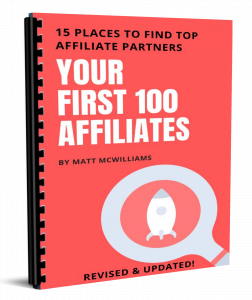 |
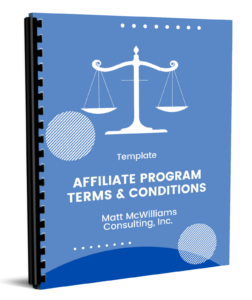 |
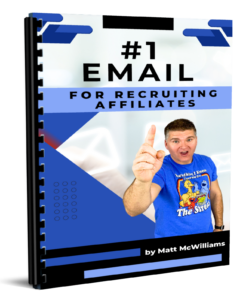 |
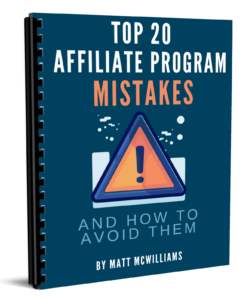 |
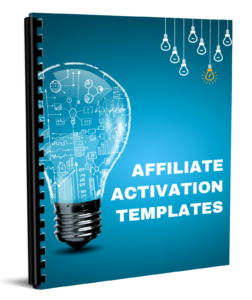 |
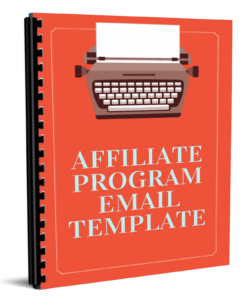 |
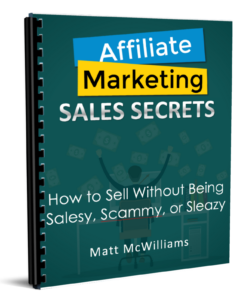 |
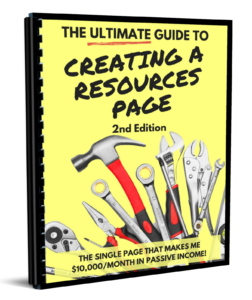 |
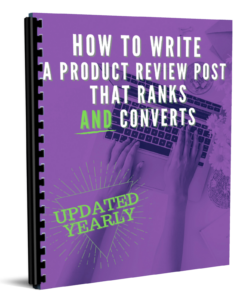 |
